 Approved by Dr. Dwight Alleyne, DVM
Approved by Dr. Dwight Alleyne, DVM Dealing With Dog Diarrhea: Tips For An Upset Tummy
Dealing with an upset tummy can be bad enough, but when you've got diarrhea in dogs...well, it could be due to harmless reasons - or more serious ones. Here's how to deal with it, step by step.
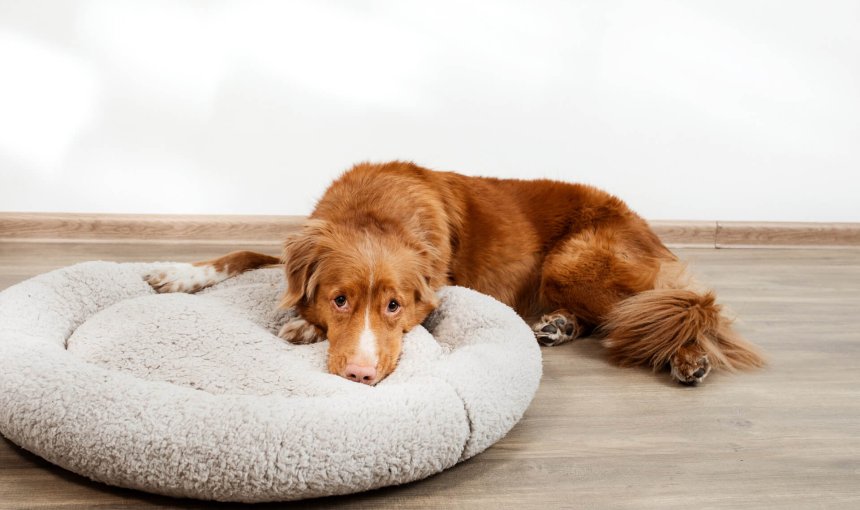
We’ve all had that one, rather…well, memorable Chipotle meal – but when it comes to diarrhea in dogs, things might get a bit more serious. So here’s everything you need to know to handle it – and why you should consider monitoring their movements to stay on top of where they’re getting fed.

Always know your buddy is healthy & safe
Read moreAm I dealing a case of dog diarrhea…or something else?
Dog diarrhea is when there’s an unusual increase in the amount of fluid in their poo. Meaning excessively loose, watery and frequent stools. While nearly all dogs get diarrhea at some point in their lives, most cases are mild and short-lived.
At the same time, it can be frustrating – and worrying – to deal with. Not only does it mean a mess to clean up, it also is a sign your dog is likely sick, suffering from a belly ache or maybe something more serious.
Chances are, you know what a normal bowel movement for your buddy looks like. Firm, brown, and in the shape of a log – this is what normal or healthy dog poo looks like. So if your dog has diarrhea, it’s important to know why this can happen and how you can best help them.
What can cause dog diarrhea?
There are many potential causes for dog diarrhea. Commons reasons why dogs get diarrhea include eating trash, spoiled or toxic food, and changes to their diet. As well as:
- Food intolerances
- Eating food that’s gone bad (including from a garbage dump)
- Accidentally eating poisonous substances, toxic plants, rocks, bones, fabric, carpet, and other indigestible materials
- An allergic reaction to certain types of food (e.g. milk, wheat gluten, soy, corn, beef)
- Bacterial or viral infection
- Internal parasites
- Kidney or liver disease
- Cancer or other tumors of the digestive tract
- Certain medications
- Stress or emotional disturbances
- Poor quality diet
- Being food-motivated and accepting treats even after being well-fed
- Sneaking bites of food or trash from the street when you’re out on your daily walks
How you can stay on top of your dog’s meals
- Monitor every morsel
Epecially if they like to accompany you to the kitchen. Turns out, a whole bunch of harmless, even healthy foods (like onions, garlic, and mushrooms) can be fatally toxic to them! - Set some firm boundaries regarding your dog’s meals
Whether it’s your friends, loved ones, kids, housemates, or whoever’s feeding your dog. Meaning, no extra treats and no foods that are off-limits to dogs. - Figure out where your dog might be getting fed otherwise
It could be at your neighbors’, the local park, or even on your daily walks. Any amount of time your dog spends outdoors means they could sneak something out of the trash or get fed something they shouldn’t. (Like if they beg for food at a parkside picnic or camp.)
💡A dog GPS tracker can help you figure out where your dog’s been all day – with just a glance at your phone. Plus, you can track your dog’s movements in real-time, set up “no go zones” to prevent them from sneaking out, or check their Location History to pick up any snack spots in their environment.
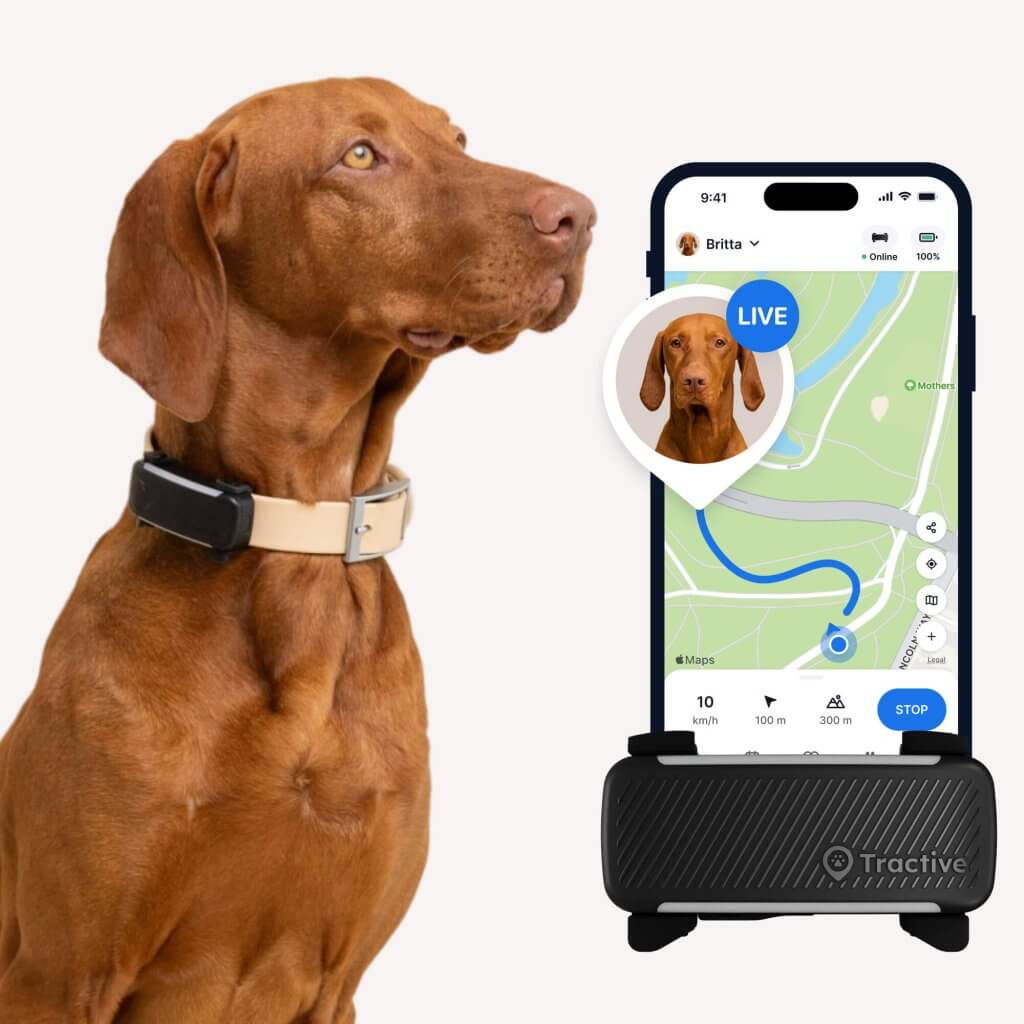
Keep track of your dog’s daily adventures
Follow every step with unlimited range Live Tracking. Get alerts if they wander too far. Keep them happy & healthy with Activity & Sleep Monitoring. Get Health Alerts if something seems off.
What should you do if your dog gets diarrhea?
In most cases, dog diarrhea is mild and may pass entirely by itself without much fuss. Here are some basic tips for dealing with it:
1) Deal with the mess.
If your dog has diarrhea, chances are they won’t be able to make it outside in time, and you may now be dealing with a pretty stinky mess. Try to clean up the poo as soon as possible, and disinfect the area.
Now this is going to sound gross, but bear with us: check the feces for blood, mucus, and consistency. This information will come in handy in case you need to consult your vet. So while you should clean up as soon as possible, it’s not a bad idea to collect a sample for your vet. This way, they can examine your dog’s stools for more information on what has caused their diarrhea.
2) Keep an eye on your dog’s behavior.
After your dog has had diarrhea, it’s important to see if you can spot any changes in their behavior that might indicate signs of serious illness. (Which we cover in the next point.)
Now you might be wondering, my dog has diarrhea but is acting fine – what gives? Which isn’t entirely out of the ordinary either. In these cases, just give your buddy some time (and plenty of water.) It’s likely their upset tummy will pass by itself and they’ll be back to full health shortly.
💡 If things just don’t seem right, remember the golden rule: when in doubt, call your vet. You know your dog, and only you know the signs that something is wrong. Trust your instincts and if you think you need veterinary guidance, pick up the phone.
3) Call your vet.
While most are not serious, some cases of dog diarrhea may indicate that your dog is suffering from a serious illness, poisoning, or injury.
So if you see signs any of the following signs after the diarrhea, contact your vet immediately:
- Lethargy or lack of energy
- Poor appetite
- Blood in diarrhea
- Fever
- Vomiting
- Discomfort or pain
- Signs that your dog may have swallowed a toxic substance or foreign object (like hacking, gagging, coughing, or wheezing)
- Pale gums
- Black, tarry poo
- Longer diarrhea (lasting over 24 hours)
If you have a puppy, it’s important to call the vet immediately at the first signs of diarrhea. Similarly, if you have an elderly or medically frail dog suffering from diarrhea, tell your vet right away. Diarrhea in puppies should be treated as a potential emergency, so call your vet immediately.
How to manage diarrhea in dogs
Once you have dealt with the initial situation and contacted your vet if necessary, you can take the following steps to manage your dog’s diarrhea:
- Give your dog a break from food
Your vet might advise you to withhold food for up to 12-24 hours. This can help your dog’s stomach time to clear out after diarrhea. Else, your vet might also prescribe you a specific diet to feed to your buddy in small amounts. (Especially if you’ve got a puppy or a senior dog at home, since they need some extra nutrients.) - Ensure your dog drinks plenty of water
During fasting, it’s essential to make sure your dog drinks enough water. This helps them to replenish the fluids lost during their diarrhea episode(s). Diarrhea can lead to dehydration, so it’s important to give your dog access to water at all times. If you notice that your dog is not drinking enough water, use low-sodium broth, ice cubes, or a water fountain to encourage your dog to drink more. - Feed a bland diet
After fasting, your vet might prescribe a bland food diet for your dog. This might include simple, easy-to-digest options like boiled white rice, boiled chicken or ground beef. Avoid feeding your dog bones, snacks, or table scraps and try and feed them in small amounts over the course of the day. - Follow your vet’s prescribed meds for the full course
Your vet might also prescribe you specific medication to treat your dog’s diarrhea. These include anti-diarrheal agents, probiotics, and/or de-worming tablets. Always make sure to use these medications for the full course – i.e., until you’ve finished all of the tablets or similar – even if your dog seems to be getting better quite soon.
Where a dog GPS tracker can step in
Dealing with dog diarrhea can be stressful, especially if their symptoms come and go or seem to be triggered by their environment or diet. A Tractive GPS & Health Tracker can help you monitor your buddy’s behavior and figure out what might be causing their symptoms in the first place.
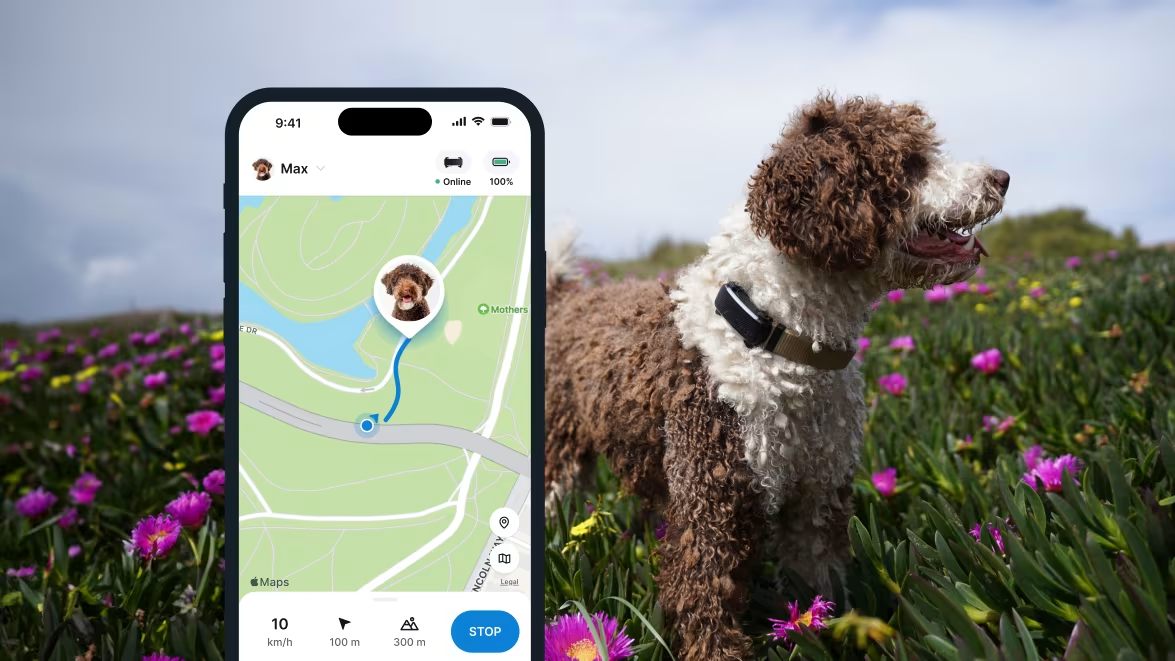
Strapped to your dog’s collar, you can now check:
- Where your dog might be scavenging for food
One common cause of diarrhea is eating something inappropriate during walks or outdoor play. From your dog’s Location History, you can check where they’ve been and identify potential problem areas. (Like spots where they may have scavenged food or trash.) - Any “no go zones” around your property
And set up a Virtual Fence around these areas. This can help prevent them from returning to risky locations. The minute your dog tries venturing near one, you’ll get an escape alert warning you.
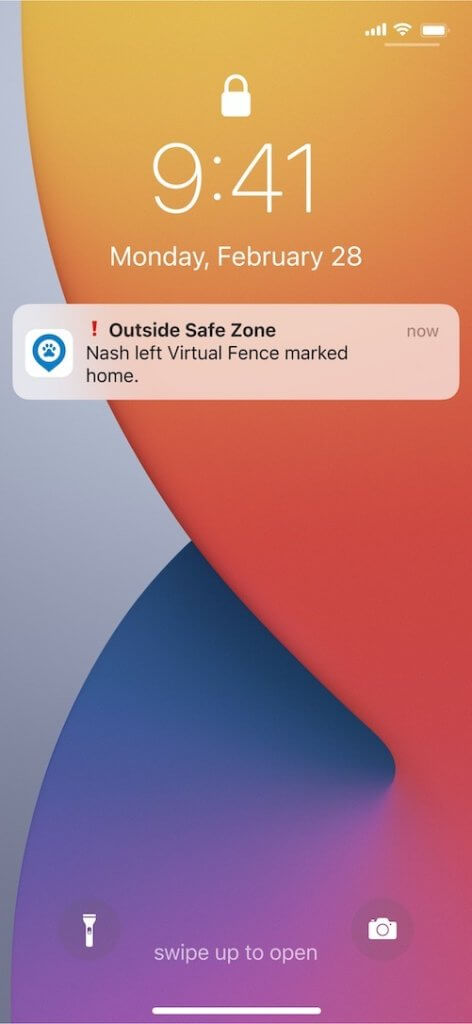
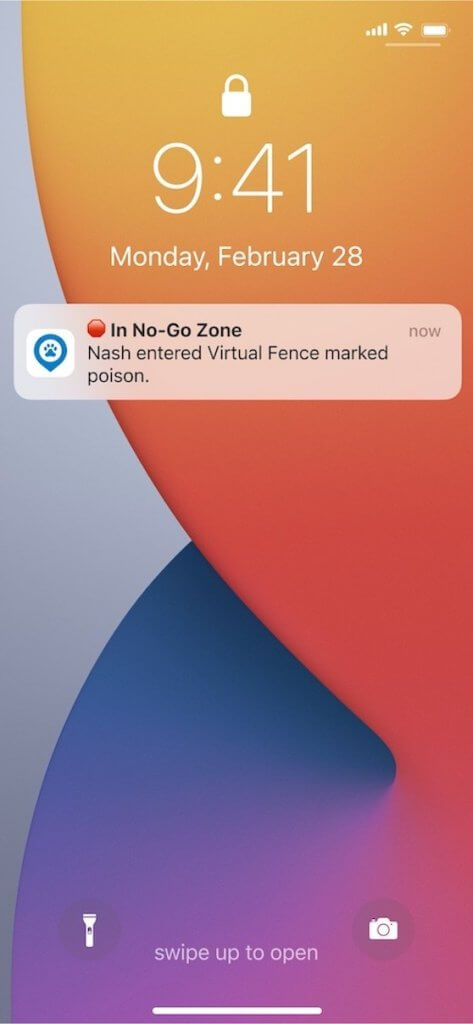
- Pick up on a sickness before it worsens
When a dog isn’t feeling well due to diarrhea, you may notice lethargy, restlessness, or disrupted sleep. Tractive’s Activity Monitoring and Wellness Score help track changes in your dog’s energy levels, allowing you to spot signs of discomfort early. If your dog is suddenly less active than usual or has restless nights, it could indicate that their digestive issues are worsening. - Get your dog to a vet before an emergency
Digestive issues can lead to unusual behavior changes. Tractive’s Health Alerts notify you of any significant drops in activity or disrupted sleep patterns. These are important clues that your dog may still be feeling unwell. This data can be useful when discussing symptoms with your vet, helping you track whether their condition is improving or if further treatment is needed.
By using a Tractive GPS & Health Tracker, you can monitor your buddy’s behavior, prevent scavenging, and stay on top of potential health concerns. Helping you manage and prevent dog diarrhea like a pro.
Your furry friend’s health and wellbeing means as much as to us as it does to you. So we’ve made it a priority to only share medically-relevant content on our blog. This post was checked, double-checked, and medically verified by Georgia-based vet, Dr. Dwight Alleyne.

Dr. Dwight Alleyne, DVM
Originally from Long Island, New York, Dr. Alleyne began his career at a no-kill animal shelter before becoming a licensed veterinary technician. He graduated from Cornell University Veterinary College in 2006 and completed an internship at Purdue University. Now practicing in Georgia, Dr. Alleyne specializes in soft tissue surgery and ultrasounds. He also writes pet health articles on his website, “The Animal Doctor Blog” (www.anmldrblog.com).



